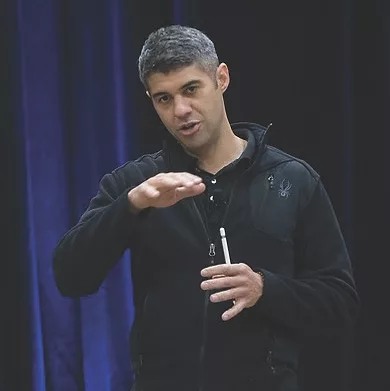“There’s a difference between shoeing horses and putting shoes on horses,” says 2014 Rising Shoeing Star Diego Almeida, CJF (TE, EE, FE), AWCF.
What pays the bills and what lights a fire in you don’t always overlap, but for Almeida it’s necessary. He had the passion, the drive to do better and the discipline to pursue an apprenticeship after school, making him the only one out of his 2010 Midwest Horseshoeing School (MHS) class who still shoes horses today.
An apprenticeship with Steve Sermersheim, CJF (TE), AWCF — who is still a good friend today — kept him under horses after school, which Almeida says is one of the keys to lowering the farrier attrition rate. As a mentor, Sermersheim “pushed us to the limit, but he was always there to help.”
Even when he was named a Rising Shoeing Star, Almeida didn’t feel successful. With so much to learn, getting his certifications felt like just the beginning. Almeida became co-owner of MHS with Sermersheim, later sold to the University of Illinois College of Veterinary Medicine, where he taught for several years before becoming the program director of the Montana State University Farrier School. He is also an American Farrier’s Association (AFA) tester and certification instructor and three-time recipient of the AFA’s J. Scott Simpson Outstanding Educator Award.
Teaching at the school makes me a better farrier ...
Almeida runs his program based on what he wishes he learned in farrier school. Shoeing is only 30% of the business, he says. The other 70% is anatomy, physiology, insurance, accounting and people management. Almeida aims to prepare students for the realities of horseshoeing early so that fewer people give it up later.
“Horseshoeing schools make apprentices,” Almeida says. “They don’t make farriers.”
So, when choosing his apprentices, he looks primarily at character, which, unlike skills, isn’t something you can teach. They have to really want it and show commitment, but once they’re employed, they have a job forever, if they want it. On top of the MSU program, Almeida and his apprentices run a farrier practice apart from the school, which makes for long, hard weeks, and Almeida says he still can’t get his apprentices to leave the shop at the end of the day.
“Teaching at the school makes me a better farrier,” he says. “If I make the program harder, I have to be twice as hard on myself, otherwise the students won’t respect me. So, it puts pressure on all of us. We all have to get better or the class won’t follow suit.”
With so many schools of thought saturating farrier circles, Almeida continuously improves by practicing, reading books, listening to others and verifying that information for himself. He expects the same of his team, who he leans on as part of his multi-farrier practice.
When a horse herniated a disc in Almeida’s back, his apprentices stepped up to fill that void so he didn’t lose horses. He rarely shoes alone, he says, which he views as a safety issue, and when he wants to take a day off, he doesn’t have to worry about losing income. Almeida explains that farrier businesses are difficult to scale up because when shoers start, they’re young and in good shape, but they know very little. Then, as they age, they understand more and become better farriers, but their bodies can’t handle as many horses.
“If you shoe horses by yourself, you’re limiting the potential of your business,” Almeida says.
This is ultimately his long-term plan. Along with a retirement account and interests in product manufacturing, he can teach and manage his multi-farrier practice if there ever comes a time when he can’t shoe horses.
Related Content
50 Years of Farriery Progress
Plenty of Hoof-Care Growth in 50 Years
American Farriers Journal 1975-2025 Timeline
Celebrating 2 Decades of Extraordinary Hoof-Care Learning
Reflections on Hoof-Care Milestones Over 5 Decades: Lessiter Media’s President, Mike Lessiter
The Evolution of Horseshoes & Tools in 1 Farrier’s Career
It’s an Honor to Support the Industry
Hoof Care’s Never-Ending Journey
50 Hoof-Care Influencers of the Last 50 Years
Rising Shoeing Stars Turned Shoeing Stars
Award-Winning Hoof-Care Content








